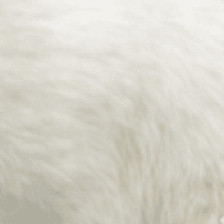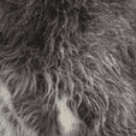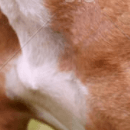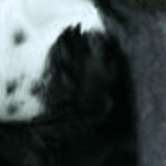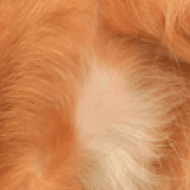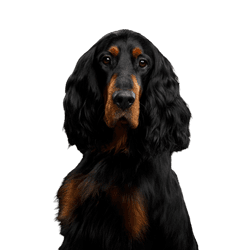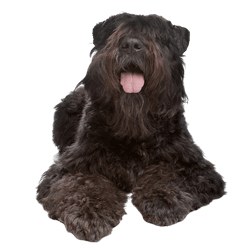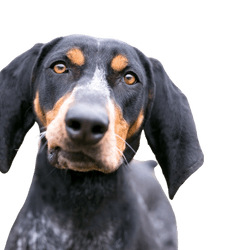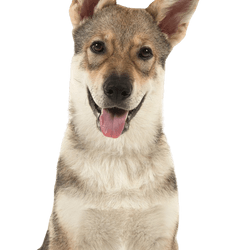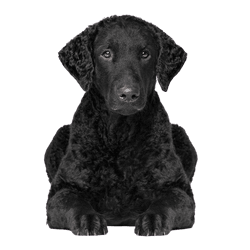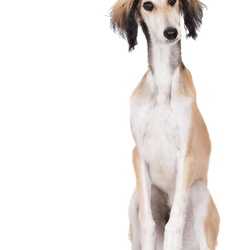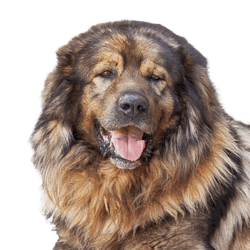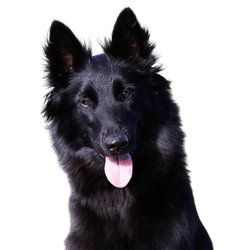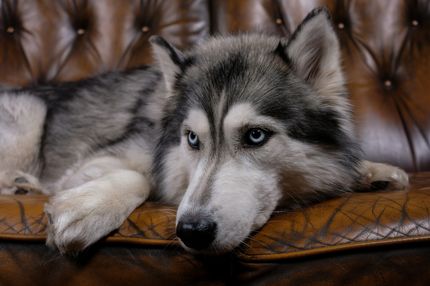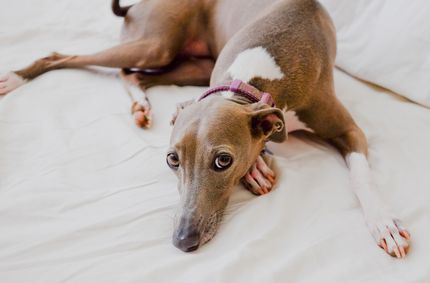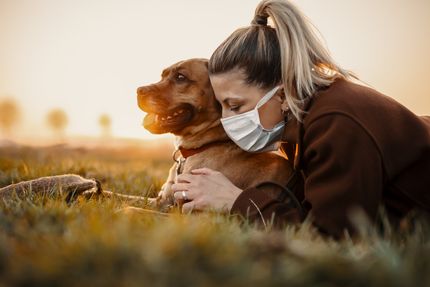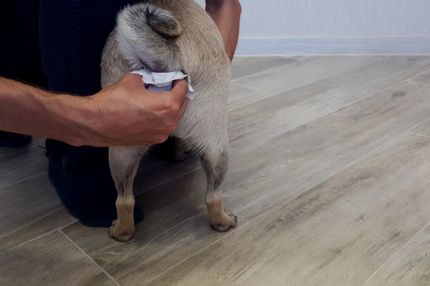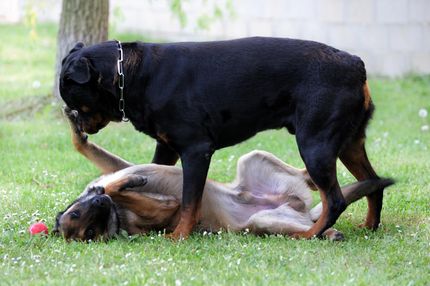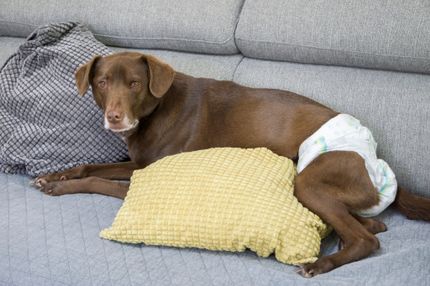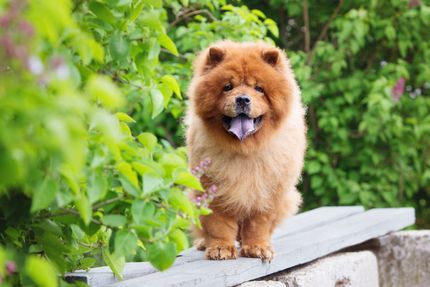Facts & Origin
Origin and history of the Alaskan Malamute
The Alaskan Malamute has a very long breeding history, which begins in the Arctic. Already more than 2000 years ago this breed was used as a sledge dog to transport the goods of the arctic peoples. For this reason, they are also called "locomotives of the north" and are very much appreciated by the people around the Arctic Circle.
The Alaskan Malamute also found its use in sled dog races around 1900. the Malamutes were always in the front and were considered handsome dogs. Twenty years later another dog breed, which looked very similar to the Alaskan Malamute, was integrated for the first time into the races.
This dog breed was the archetype of the Siberian Husky.
The Husky is slimmer and of a more sporty build than the Alaskan Malamute. It is a misconception that there is such a thing as a Husky Malamute. Both the Alaskan Husky and the Siberian Husky have a different breeding history to the Alaskan Malamute. The Malamute is associated with a lot of tradition, strength and pride. The original nature of the dogs remained despite the targeted breeding, which began in the 20th century. In 1963, the FCI recognised the Alaskan Malamute as an independent dog breed and about seven years later, the Malamute was imported into German territory. From this time on, the breed spread more and more and is now represented by two clubs in the VDH.
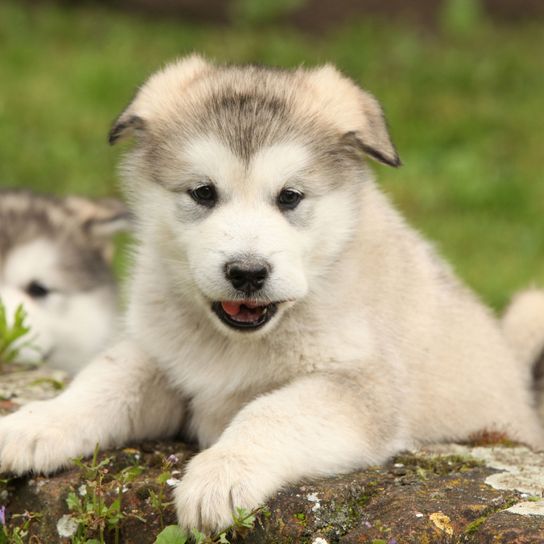
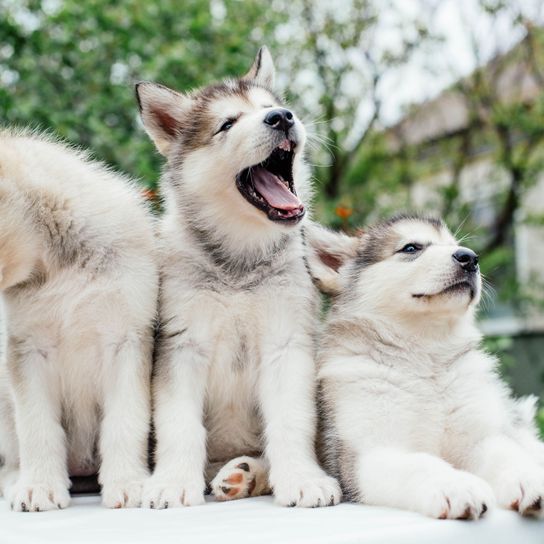
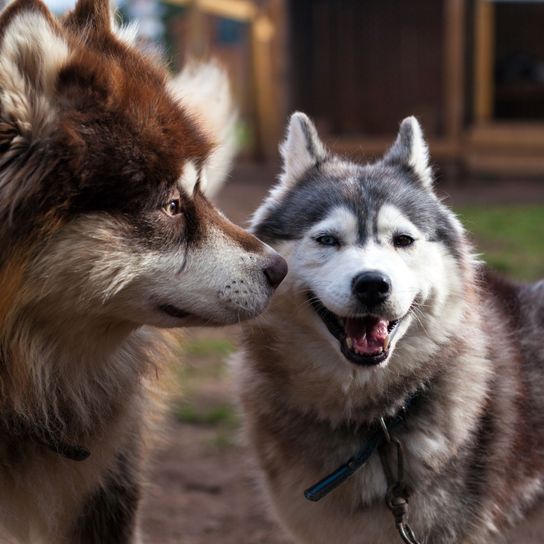
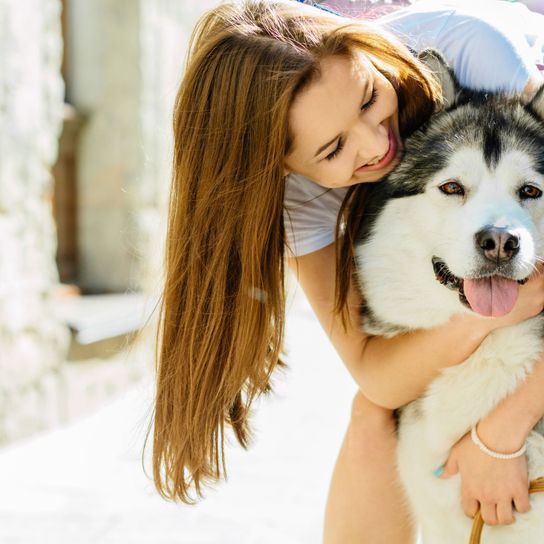
| Alternate Name | - |
| Origin | USA |
| Life expectancy | 10 - 14 years |
| Care requirements | high-maintenance |
| Activity level | high |
| FCI group | Nordic Sledge Dogs |
| AKC group | Herding Group |
| KC group | Pastoral Group |
Alaskan Malamute mixes
Attitude, character and temperament of the breed
Description and characteristics of the Alaskan Malamute
The appearance of the Alaskan Malamute is characterised by its proud posture, strong build and friendly face. This breed resembles a black and white tail-wagging fur ball, which enchants the whole world with its openness and loving nature. You will notice that the Malamute is not only a robust sled dog, but that they carry their heart in the right place. This breed has an extremely clear view and goes through life vigilantly. Arleady as puppies the Alaskan Malamutes are very playful and curious. If you are looking for a faithful companion with whom you can experience adventures, this breed is the right one for you.
Males of this dog breed reach a withers height of up to 63.5 cm, bitches are usually 5-8 cm smaller. The strong dogs weigh between 34 and 38 kilograms and belong to the group of large dogs. The coat of the malamute is thick, fluffy and has a double layer. As the dog comes from the cold north, it has a dense, oily undercoat that can grow up to 5 cm long. The top coat is also dense, but not very long. In colour all dogs of this breed resemble each other, with a wolf grey coat, which sometimes shows brown colouring or white and black markings. It is also not uncommon for the robust dog to have a white mask. In contrast to its relative, the Siberian Husky, the Alaskan Malamute exclusively has brown or black eyes, which can at most show a reddish colouring.
Keeping of the Alaskan Malamute
If you would like to buy an Alaskan Malamute, you should think about some facts beforehand. Although the keeping of this breed is quite uncomplicated, it is still time consuming. The sled dog needs a lot of exercise and movement. It is recommend not to keep them in a small apartment, but rather in a large house, preferably with a garden. You should walk your Malamute at least 1-2 hours per day. If you like jogging, inline skating or cycling, this breed is always happy to accompany you. The Alaskan Malamute is also a great friend of nature, they love long walks in the forest and search games in the grass.
It is important that the Alaskan Malamute is mentally and especially physically challenged. Here are a few examples of how you can keep your dog busy:
- Agility
- Companion dog training
- Flyball
- Use as sledge dog in winter
- Search and intelligence games
The Alaskan Malamute is not a beginner's dog since you as the owner should already be experienced and able to be consistent with them. It is an advantage if you already had a dog, because these original dogs can have a mind of their own and are very free spirited. The Alaskan Malamute can also be kept in a pack. They generally feel more comfortable among several dogs and people as opposed to being kept alone. According to the FCI standard they are not considered "one-man-dogs".
Usage
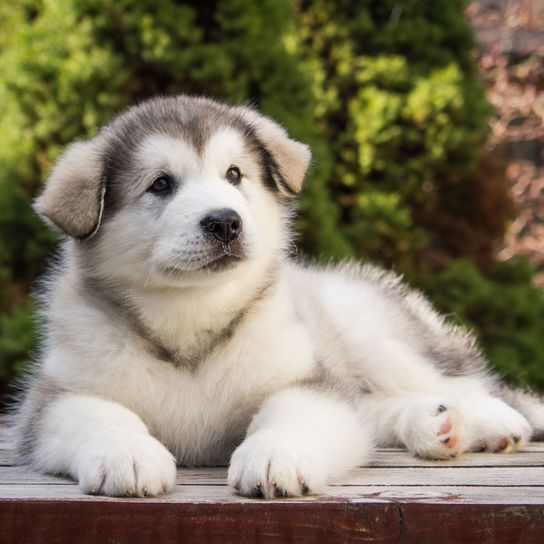
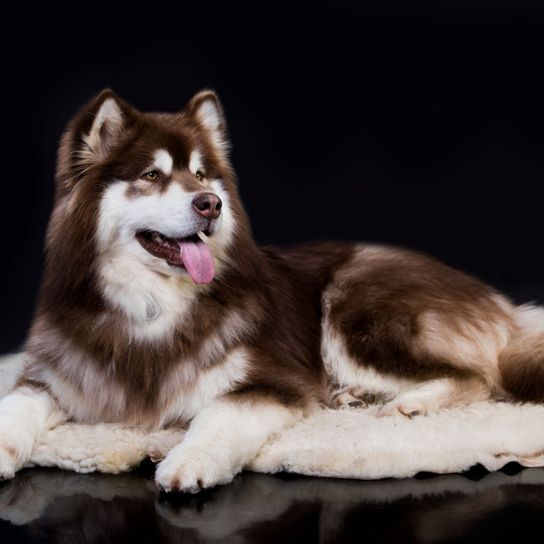
Diseases of the Alaskan Malamute
Unfortunately this breed suffers from a genetic skin disease. This is called zinc-reactive dermatosis and is responsible for the fact that the dog can hardly absorb and process zinc through its food. In addition, the Alaskan Malamute is affected by Polyneuropathy (AMPN), which you can be proven with a genetic test. You should have your Alaskan Malamute puppy examined by a veterinarian. A malamute costs between 1000 and 1800 Euros.

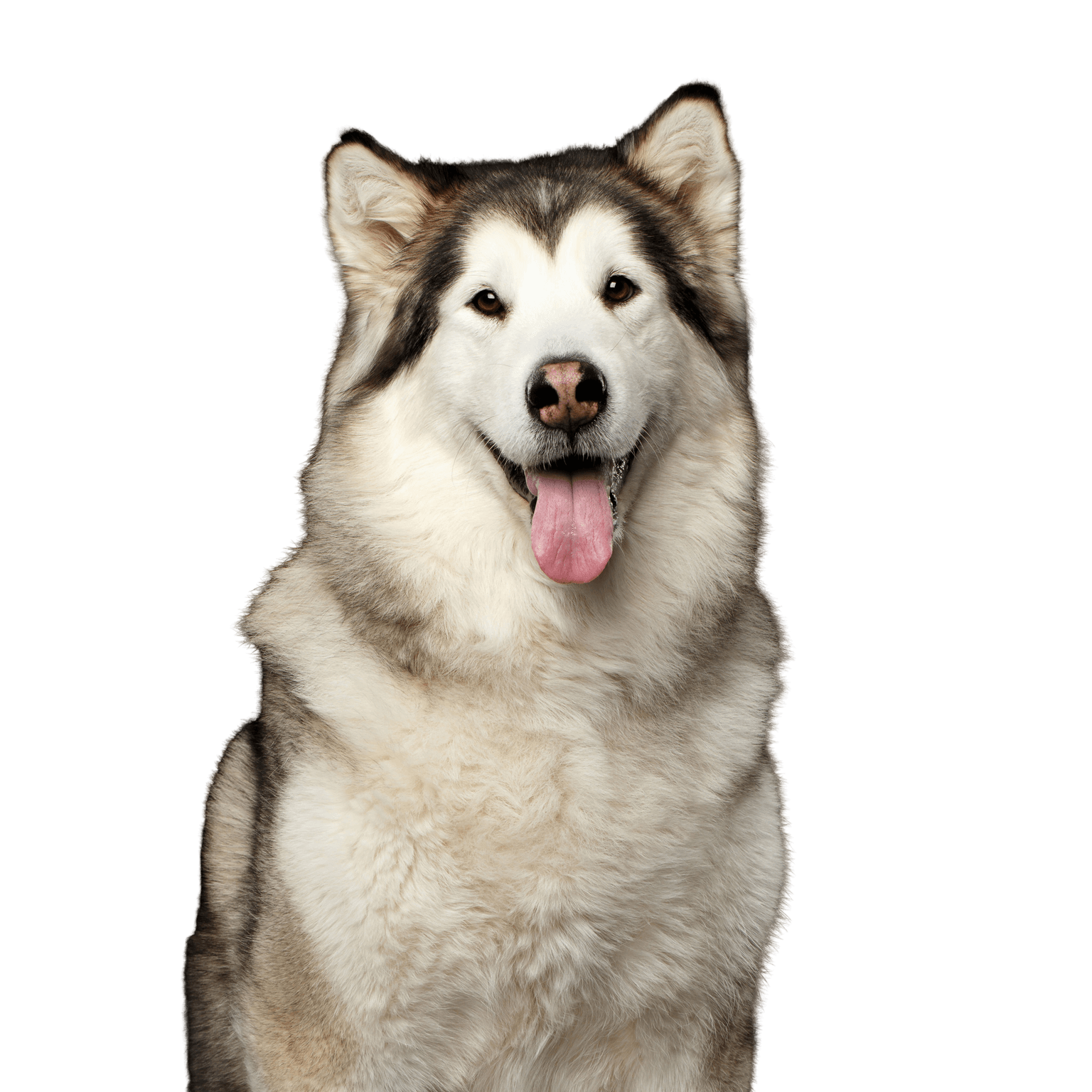
The US-American dog breed Alaskan Malamute is assigned to the FCI group 5, section 1, under the standard number 243.
Use and appearance of the Malamute
They are considered Nordic sled and hunting dogs and is the state dog of the state of Alaska in the United States. This breed can reach a withers height of up to 63.5 cm, and is therefore considered a large dog breeds, with a maximum weight of 38 kg. The coat of these dogs is of medium length and can have different colours. Characteristic for the Alaskan Malamute is their playfulness, loyal nature and strong urge to move. This breed can live to be over 12 years old.
Regular coat care is essential for this breed. The husky-like dog needs to be brushed regularly and the undercoat should be thinned out for the summer. You can either trust an experienced groomer with your dog or you try doing this yourself. You should always have a brush, comb and, if necessary, thinning scissors at home.
| Fur length | long |
| Fur | - |
| Ear shape | Standing Ears |
| Tail | rolled up |
| Anatomy | strong, sporty |
| Size ♀ | 56 - 61 cm |
| Weight ♀ | 32 - 38 kg |
| Size ♂ | 61 - 66 cm |
| Weight ♂ | 36 - 43 kg |
| Suitable For | - |
Colors










